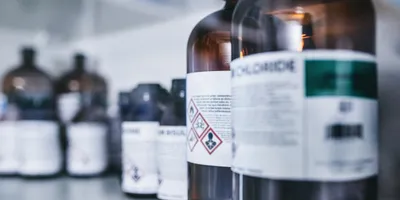A rotary evaporator, found in every chemistry lab, allows users to perform chemical separation or purification using heat and agitation—or stirring—under vacuum. Key applications for evaporators include sample concentration, solvent recycling, extractions, and separation of solvent mixtures.
Top 5 Questions You Should Ask When Buying an Evaporator or Evaporation System
- What are your sample sizes? Microtiter plates and micro centrifuge tubes work best in a centrifugal vacuum concentrator. For large samples up to 450mls, a vortex evaporator is recommended.
- What are your samples? Acids require an acid resistant system. Solvents damage plastic and rubber components; an appropriate system to prevent damage is recommended. A -50C cold trap is ideal for aqueous based samples, a -85C cold trap traps most solvents and a -105C cold trap is recommended for alcohols.
- Are your samples heat sensitive? Even at ambient set point, vacuum concentrators add heat through friction. A concentrator that has refrigeration built into it will give you the temperature control recommended to maintain the viability of heat liable samples.
- Do you have limited space? A floor model with casters or small all-in-one bench top model can be moved out of the way when not in use.
- Do you prefer vacuum evaporation or nitrogen blow down? Some samples require evaporation under nitrogen (which is more gentle) for volatile solvents.
Top ten features/factors survery respondents look for when buying a rotary evaporator: | |
| Ease of use | 100% |
| Safety | 98% |
| Low maintenance/easy to clean | 98% |
| Low operating cost of ownership | 96% |
| Reliability | 95% |
| Ease of installation | 91% |
| Service and support | 89% |
| Price | 85% |
| Warranty | 77% |
| Built-in vacuum controller | 72% |
Rotary evaporators are used for the following primary application(s) in respondents' labs: | |
| Concentrating substances | 58% |
| Distilling low-boiling solvents | 40% |
| Extractions | 28% |
| Drying powders | 22% |
| Distilling temperature-sensitive substances under vacuum | 20% |
| Separating material mixtures | 15% |
| Recycling solvent waste | 14% |
| Distilling oxygen-sensitive substances under inert gas | 5% |
| Other | 5% |
The type(s) of rotary evaporator(s) used in our readers' labs: | |
| Hand lift | 58% |
| Motor lift | 43% |
| Other | 6% |
The size of rotary evaporator heating bath used in respondents' labs: | |
| Less than 1 liter | 12% |
| 1 liter | 21% |
| 2 liters | 20% |
| 3 liters | 11% |
| 4 liters | 15% |
| 5 liters | 14% |
| 10 liters | 2% |
| More than 10 liters | 4% |
The rotary evaporator components being used by survey respondents: | |
| Condensate tap | 45% |
| Digital bath | 42% |
| Diagonal condenser | 39% |
| Re-circulating cooler | 34% |
| Vertical condenser | 32% |
| Diaphragm pump | 30% |
| Chiller | 28% |
| Dry ice condenser | 20% |
| Reflux condenser | 18% |
| Cold finger condenser | 9% |
| Other | 2% |









